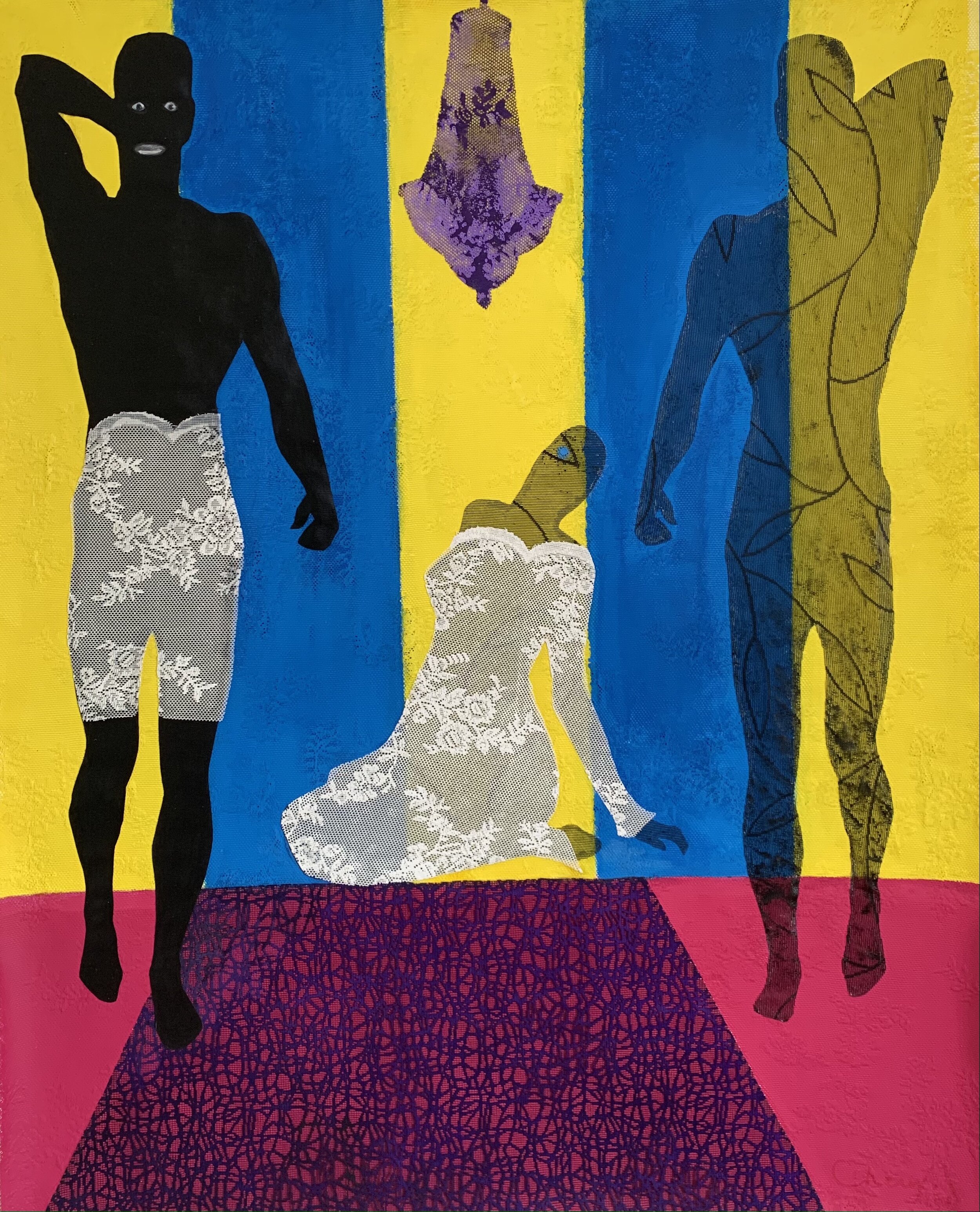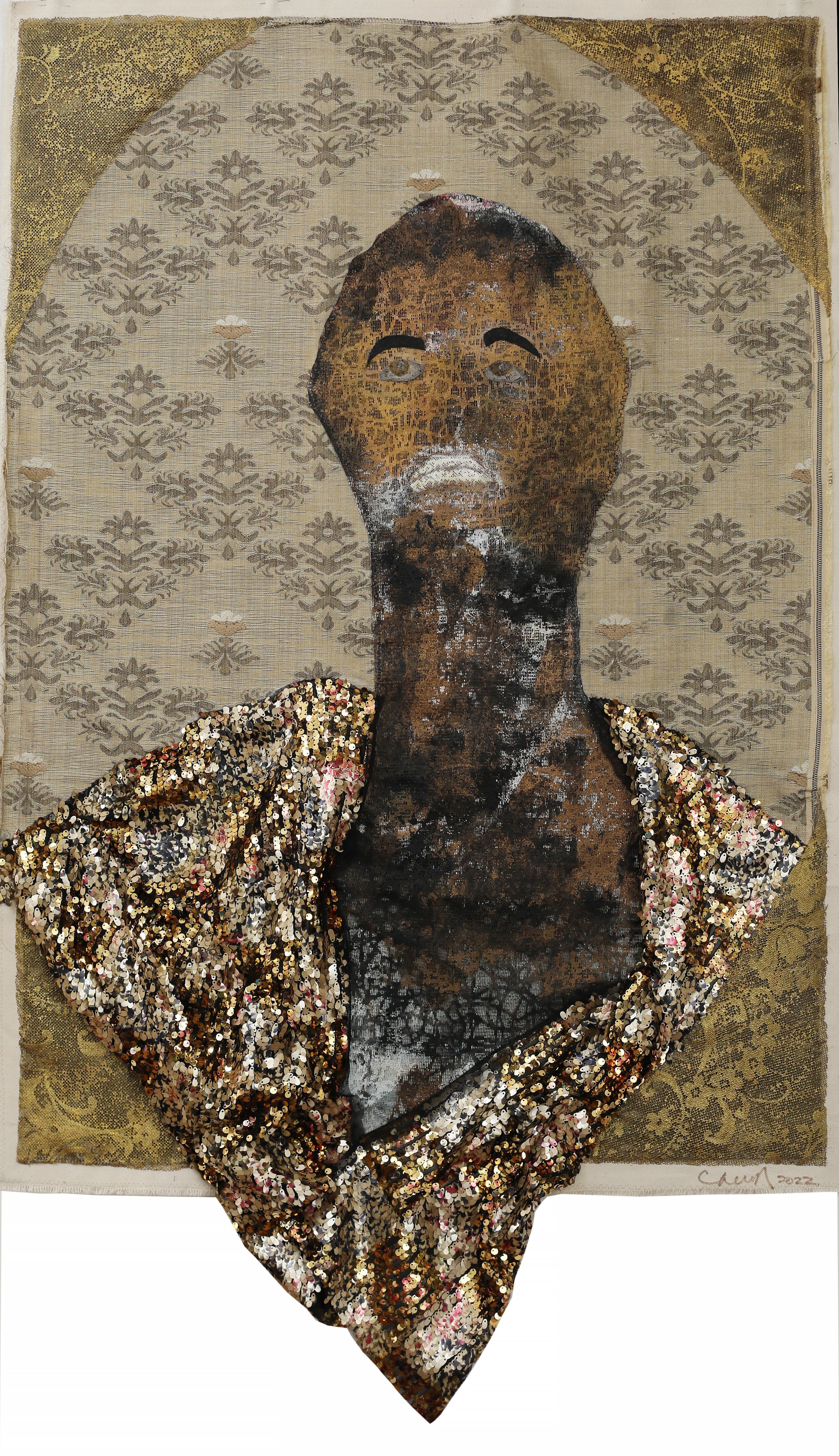Back to Black was conceived as I reviewed my work, in particular, The Middle Passage where I was often queried about the faces being white. There were two responses.- I wanted the observer to reflect on her or his feelings when the subject‘s face was presented without a skin colour knowing that the image represented the black race and secondly, the use of smoke as a medium of painting was most dramatically contrasted by maintaining a white background. Now the time is ripe for Black! More to come.
The majority of art pieces in this section are inspired from an exhibition in the Musée d’Orsay, entitled “Le Modèle Noir, De Géricault à Matisse” in 2019. The objective of the exhibition was to attribute paintings, sculptures and photographs of black people originating from Africa or the Antilles residing in France during the 17th century to their creators at a time when racism, literature of exotic voyages, and the slave trade were existent. The exhibition also attempted to share a history of the fine arts interlinked in black history.
The ensuing Museum catalog, from which quotations have been made, and which included images of noble, proud, beautiful black images inspired me to transform and to some extent, reinterpret and retell their stories. The use of lace in the pieces speaks to the fragility, vulnerabilty, beauty, and interconnectivity of the people in the portraits….whether African or Caribbean.
A selection will be commented upon herein. Young Negro with an Arc, 18th century painting by Hyacinthe Rigaud, a Catalan-French painter famous for his portraits of French nobility. Why he chose to paint the young man in regal clothing, despite the gold neck collar, is debatable. He was undoubtably an enslaved person but his innocence, posture, and robes bely the general representation of blacks at that epoch. On the contrary, my art pieces Joseph, Joseph 2 (original study by Theodore Géricault, 1818-1819 ) and the Last of Joseph ( original Adolph Brune ) are all paintings inspired by the black model Joseph who was certainly a free man. Joseph, known only by his first name, was one of the most celebrated artistic models of the 19th century France. He was born in Saint Dominique (Haiti), and resided first in Marseille and then Paris. He was first engaged as an acrobatic actor, later employed by Géricault and was subsequently determined to be the “most beautiful model who graced the Paris ateliers”.
In The Taming of the Negro, and The Taming of the Negro Part 2, Joseph, once more, is the central person. The original paintings from which they are inspired are “ Saint Phillipe baptisant l’eunuque de la reine d´Èthiope”, 1848 by Abel de Pujol and “Étude d’après le modèle Joseph”, Théodore Chassériau, 1838.
Pourquoi naître Esclave, has been recreated to be adorned in colours of gold, floral images and free from binding ropes as presented in the marble bust of the same name byJean-Baptiste Carpeaux, 1869.
Finally, Ira Aldridge! Born early 1800. He was the first black actor in England to play leading roles, including that of Othello, in Shakespeare’s play. Immigrating from America where racism precluded him earning a living as an actor, he gained recognition and fame and was a pioneer in his field honing his acting skills as a noble figure. His performances in Europe were highly acclaimed. Apart from Othello, he played Shylock, Richard III, and King Lear.

Still Life, Lace, Acrylic on Canvas, 120x100 cm

Still Life 2, Mixed Media on Canvas, 120x100cm

Young Negro with an Arc, Acrylic, Lace, Sequins on Canvas, 120x100 cm

Jewel, Acrylic, Textile Collage on Canvas, 120x100cm

Joseph, Lace, Acrylic on Canvas, 94x71 cm

Joseph 2, Lace, Acrylic, Sequins on Canvas, 100x75cm

The Last of Joseph, Mixed Media Tapestry, 180x130 cm

The En(Slave)d, Lace, Acrylic on Canvas, 120x98 cm

Thomas-Alexandre Dumas, Mixed Media on Canvas, 145x109 cm

Head of a Man (? Ira Aldridge) Othello, Mixed Media Collage, 98x72 cm

Head of a Man (? Ira Aldridge) Othello 3, Mixed Media Collage, 100x75 cm

Restitution? Anatomy, Charité Berlin, Mixed Media Installation, 107x107x14 cm

Pourquoi naître Esclave, Mixed Media Tapestry, 125x100 cm

Madeleine, Mixed Media Collage on Canvas, 134x103 cm

(A) Version of Self, Acrylic, Textile, Collage, 130x100 cm
The Taming of the Negro, Mixed Media Collage, 150x155cm,

The Taming of the Negro, Part 2, Mixed Media Collage, 145x115 cm

Memories of the Motherland, Mixed Media on Canvas, 100x120 cm

